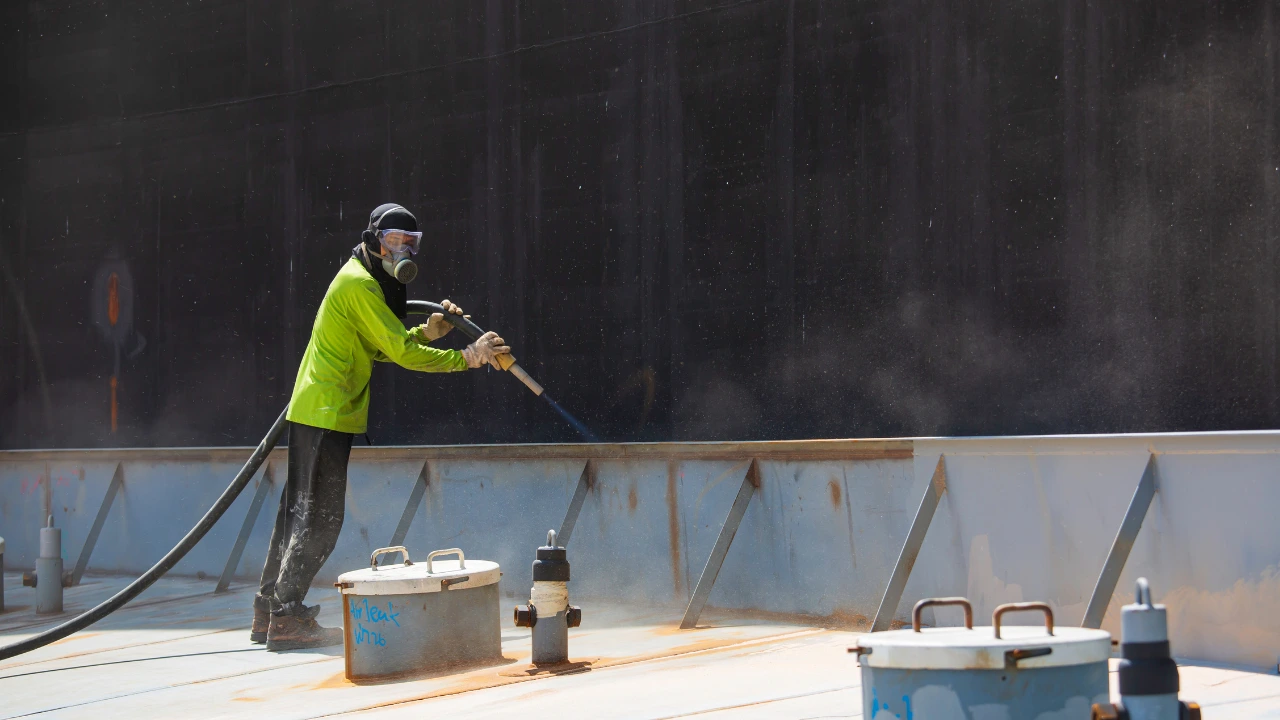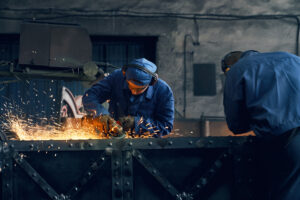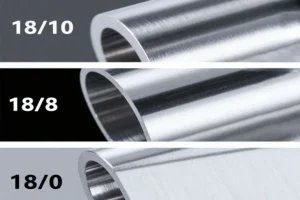When it comes to surface finishing, there are many techniques available, each with its own set of advantages. One method that stands out for its versatility and effectiveness is glass bead blasting. This process is prized for its ability to clean, deburr, and finish surfaces without causing damage or altering the dimensions of the part.
This guide will explain everything you need to know about this popular surface treatment method. We will cover what glass bead blasting is, how the process works, and explore its numerous advantages and applications across various industries. Whether you’re a manufacturer looking for a reliable finishing process or simply curious about industrial techniques, this article will provide a comprehensive overview.
Understanding Glass Bead Blasting
Glass bead blasting is a surface treatment process that involves propelling fine, spherical glass beads at high velocity onto a surface. Unlike more aggressive abrasive blasting methods that use angular media like sand or steel grit, the round shape of the glass beads creates a peening action rather than an etching or cutting one. This results in a smooth, bright, and uniform matte finish.
The process is performed inside a controlled environment, typically a blast cabinet, to contain the media and dust. An operator directs a stream of pressurized air mixed with glass beads onto the workpiece. The impact of the beads removes surface contaminants, smooths out imperfections, and creates a clean, consistent texture without removing the underlying material. This non-aggressive nature makes it an ideal choice for delicate parts and soft metals.
How Does the Glass Bead Blasting Process Work?

The mechanics of glass bead blasting are straightforward but highly effective. The process relies on a combination of air pressure and abrasive media to achieve the desired surface finish. Here’s a step-by-step breakdown of how it works:
- Preparation: The workpiece is first cleaned to remove any grease, oil, or heavy contaminants. This ensures the glass beads can work directly on the surface without any interference. The part is then placed inside a blast cabinet, which is a sealed enclosure with a viewing window and gloves for the operator to handle the part and the blast nozzle safely.
- Media Selection: The operator chooses the appropriate size of glass beads for bead blasting. The size of the beads, often referred to as mesh size, plays a crucial role in the final finish. Finer beads produce a smoother, brighter finish, while coarser beads create a more textured, matte surface. The choice depends on the material of the workpiece and the desired outcome.
- Blasting: Pressurized air is fed into a blast gun, creating a vacuum that pulls the glass blasting beads from a hopper into the air stream. This mixture is then accelerated through a nozzle and directed at the surface of the workpiece. The operator manually controls the nozzle, moving it evenly across the surface to ensure a uniform finish. The pressure can be adjusted, typically ranging from 40 to 100 PSI, depending on the application and the delicacy of the part.
- Peening Action: As the spherical glass beads for blasting strike the surface, they create thousands of tiny, overlapping dimples. This process, known as peening, cold-works the surface, which can increase its fatigue resistance and durability. The impact dislodges surface contaminants like rust, scale, and old paint without abrading the base material.
- Recycling: The used glass bead for blasting falls to the bottom of the blast cabinet. Most modern systems include a media reclamation system that separates the broken-down beads and contaminants from the usable media. The clean, intact beads are then returned to the hopper to be used again, making the process cost-effective and environmentally friendly.
- Finishing: After the blasting process is complete, the workpiece is removed from the cabinet. Any residual dust or media is blown off with compressed air, revealing a clean, uniform, and aesthetically pleasing finish.
The Advantages of Glass Bead Blasting
The popularity of glass beads blasting stems from its numerous benefits. It offers a unique combination of cleaning power and gentleness that is difficult to achieve with other methods. Let’s look at the key advantages that make this process a preferred choice in many industries.
Superior Surface Finish
One of the primary benefits is the quality of the finish. The process produces a soft, bright, and uniform matte texture that is both functional and visually appealing. Because the beads are spherical, they don’t create a sharp, angular profile on the surface, which is often a byproduct of other abrasive media. This makes it ideal for cosmetic parts where appearance is important.
Non-Abrasive and Non-Damaging
Unlike sandblasting, which can be harsh and remove base material, glass bead blasting is non-aggressive. The round shape of the beads means they peen the surface rather than cutting into it. This is crucial when working with delicate parts, soft metals like aluminum and brass, or components with tight dimensional tolerances. The process cleans and finishes without altering the part’s dimensions or causing surface damage.
Environmentally Friendly
Glass beads are chemically inert and environmentally safe. They are typically made from lead-free, soda-lime glass, which does not pose a health risk to operators or the environment. Furthermore, the ability to recycle the media multiple times reduces waste and lowers the overall cost of the process. This makes it a more sustainable option compared to chemical cleaning methods or single-use abrasives.
Increased Durability and Fatigue Life
The peening action of glass bead blasting imparts a layer of compressive stress on the surface of the material. This compressive layer helps to close up surface pores and can increase the part’s resistance to fatigue, stress cracking, and corrosion. This is particularly beneficial for components that are subjected to cyclical loads, such as automotive and aerospace parts.
Versatility in Applications
Glass bead blasting services are used across a wide range of materials and applications. It is effective on metals like stainless steel, aluminum, brass, and titanium, as well as on plastic and composite materials. The ability to adjust bead size and air pressure allows for fine-tuning the process to suit the specific needs of the material and the desired finish.
Effective Cleaning and Deburring
The process is highly effective at removing a variety of surface contaminants, including:
- Rust and corrosion
- Paint and coatings
- Scale from heat treatment
- Tool marks from machining
- Light burrs from manufacturing processes
It can clean intricate parts with complex geometries, reaching into corners and crevices that might be difficult to access with manual methods.
Applications of Glass Bead Blasting

Given its many advantages, it’s no surprise that glass bead blasting is utilized in a multitude of industries. From restoring classic cars to finishing medical implants, its applications are vast and varied.
Automotive Industry
In the automotive sector, glass bead blasting is widely used for cleaning and restoring engine components like pistons, valves, and cylinder heads. It effectively removes carbon buildup and grime without damaging the precision-machined surfaces. It is also used to prepare surfaces for painting or powder coating and to give a clean, uniform finish to custom car and motorcycle parts.
Aerospace Industry
The aerospace industry relies on this process for finishing and strengthening critical components. The peening effect helps to increase the fatigue life of parts like turbine blades and landing gear components. It is also used for cleaning and inspecting parts for cracks and defects, as the clean, uniform surface makes imperfections easier to spot.
Medical and Dental Fields
For medical and dental implants, a clean and biocompatible surface is essential. Glass bead blasting is used to create a uniform, textured surface on implants, which can promote better bone integration. It’s also used to clean and sterilize surgical instruments, as it effectively removes contaminants without leaving any residue.
Manufacturing and Machining
In general manufacturing, the process is used for deburring, cleaning, and finishing a wide range of machined parts. It can remove tool marks, blend surface imperfections, and create a consistent cosmetic finish. It is often the final step in the manufacturing process before a part is assembled or shipped. Many manufacturers use glass beads for shot blasting to prepare parts for further coating processes.
Mold and Die Cleaning
The plastics and rubber industries use glass bead blasting to clean molds and dies. It effectively removes residual material, release agents, and other contaminants from the mold cavities without damaging the intricate details of the mold surface. This helps to ensure the quality of the molded parts and prolong the life of the mold.
Restoration and Refinishing
From antique metalwork to classic car parts, glass bead blasting is a popular choice for restoration projects. It can gently remove years of rust and paint without harming the underlying material, restoring the part to its original appearance. It provides a clean slate for refinishing, ensuring that new coatings adhere properly.
Choosing the Right Glass Bead Blasting Services
If you’re considering using glass bead blasting services for your project, it’s important to partner with an experienced provider. A reputable service will have the right equipment, a range of media sizes, and the expertise to handle different materials and specifications. They can help you determine the optimal parameters for your application to achieve the desired finish and performance characteristics.
Your Partner in Surface Finishing
Glass bead blasting is a versatile and effective surface treatment method that offers a unique combination of cleaning power and gentle finishing. Its ability to produce a smooth, uniform finish without damaging the base material makes it an invaluable process in industries ranging from aerospace to automotive. The added benefits of increased durability, environmental safety, and cost-effectiveness further solidify its position as a go-to choice for surface preparation and finishing. By understanding how the process works and its many applications, you can better appreciate why so many professionals rely on it to achieve high-quality results.
Whether you need to clean engine parts, finish a medical implant, or restore a classic piece of machinery, glass bead blasting provides a reliable and efficient solution.






